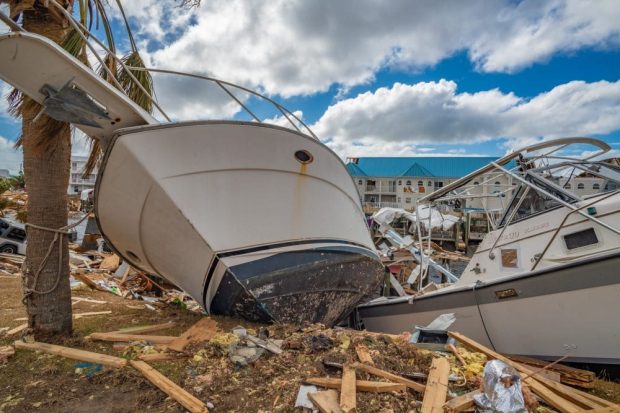When Disaster Strikes, Digital ID Is Front And Center

Hurricanes, wildfires, tornados, earthquakes and floods — disasters of all types tend to bring out the best and the worst in people. Generous donations. Ripped-off funds. Faulty grant applications and truckloads of supplies sent to the impacted areas. Whatever the angle — honest or fraudulent — the rise of the digital economy can amplify the actions of both good and bad actors in the aftermath of tragedy.
Dealing with the online aspect of disaster relief requires a new, tighter approach to ID verification and authentication. That was the main message from a fresh PYMNTS discussion with Zac Cohen, general manager at Trulioo — a discussion that took place as the PYMNTS New Orleans bureau prepares for the riskiest part of the 2019 hurricane season, and as other areas hope calamities don’t befall them in a year that has already seen too much of wildfires, flooding and severe weather.
Complex Process
A disaster sets off a complex flow of donations and disbursements, a complex process that involves disaster victims, individual donors, private charities and other nonprofits, financial institutions, private and public companies (including retailers and payment service providers) and local, state and federal governments. Sure, disaster-relief templates are always in place, but every disaster is also its unique creature, impacting different geography or demographic, and causing various types of short- and long-term suffering and disruption. Moreover, disaster-relief efforts can last years and even decades in some cases — especially when one accounts for the emotional recovery.
What can make all that so much worse is fraud. Criminals tend to exploit weaknesses, and a situation in which people have lost essential documentation and their computers and mobile devices — and when multiple responders and agencies are working as quickly as possible — provides ample opportunity for both financial and ID theft, and massive amounts of graft. “The chaos and misery can be overwhelming,” Cohen said. “Unfortunately, where there is tragedy, there is fraud.”
Another factor? The increasing use of digital and mobile technology in disaster-relief efforts, especially for disbursements to victims for such needs as housing, food and medical care. Those online pushes do indeed bring more speed and efficiency to the overall process, he said, but they also open up areas for sophisticated criminals to exploit, especially when it comes to ID verification and authentication.
So what’s the solution to that growing problem?
According to Cohen, the smart thing to do is build what he called a layered approach to confirm the identities of people and businesses affected by disasters, to make sure the relief funds are provided to those who need it. So that has to be done often in the absence of physical documents and consumers’ mobile phones. “You have to take steps to ensure those transactions are built on trust,” he said. Failing to do so can result in regulatory pressure and investigation — even punishment — and a decrease in donations from the general public.
Better ID Verification
Because each organization has different processes, technologies and use cases, during the PYMNTS interview Cohen indicated that there wasn’t a silver bullet solution for disaster relief disbursements — but the general strategy can involve leveraging instant access to reliable databases to verify victim’s personal information, and also the use of biometrics. As well, using the expertise of responding agencies can result in benefits. “Relief agencies have geographic and demographic info” about the impacted area, he said. That data can go a long way toward tighter, more secure verification and authentication efforts.
As PYMNTS readers likely know, the rise of the digital economy and mobile commerce and payments has given rise to new ways to donate to disaster relief efforts and charities around the world. Even social media is getting in on the act. For example, Instagram recently launched a Fundraiser sticker. Once a charity is selected, the user can then place a Donate button sticker on their Instagram Story so that followers can click on it to contribute.
Not to be too cynical about such efforts, they can also enable more online fraud. “Wherever there is growing scope and accessibility,” Cohen said, “fraud is a growing problem.” That problem is compounded by the ease with which people can set up online companies. As we have all seen in past disasters, operations that seem legitimate but are fronts for fraud always pop up in the aftermath of disasters to steal donations from well-meaning people eager to help out. “People do care and are heartbroken to see it happen,” he said.
That means that the good people among us always have to keep their guards up in such tense times. As well, the industry as a whole needs to work more closely with relief agencies and create more secure protocols that reflect the move online and to mobile of disaster relief efforts.
